ABCD is a cyclic quadrilateral in which AB is a diameter, BC = CD and ∠A=50∘ then ∠DBC is :
25∘
20∘
45∘
30∘
The correct Answer is:B
To solve the problem, we need to find the angle ∠DBC in the cyclic quadrilateral ABCD where AB is a diameter, BC=CD, and ∠A=50∘.
1. Identify the Given Information:
- ABCD is a cyclic quadrilateral.
- AB is a diameter of the circle.
- BC=CD.
- ∠A=50∘.
2. Use the Property of Cyclic Quadrilaterals:
- In a cyclic quadrilateral, the opposite angles are supplementary. Therefore:
∠A+∠C=180∘
- Substituting the value of ∠A:
50∘+∠C=180∘
- Solving for ∠C:
∠C=180∘−50∘=130∘
3. Analyze Triangle BCD:
- Since BC=CD, triangle BCD is an isosceles triangle.
- Let ∠DBC=θ and ∠CDB=θ (the angles opposite to the equal sides).
4. Set Up the Equation for the Angles in Triangle BCD:
- The sum of angles in triangle BCD is 180∘:
∠DBC+∠CDB+∠BCD=180∘
- Substituting the known angles:
θ+θ+130∘=180∘
- Simplifying the equation:
2θ+130∘=180∘
- Solving for θ:
2θ=180∘−130∘
2θ=50∘
θ=25∘
5. Conclusion:
- Therefore, ∠DBC=θ=25∘.
Final Answer:
∠DBC=25∘
- ABCD is a cyclic quadrilateral.
- AB is a diameter of the circle.
- BC=CD.
- ∠A=50∘.
- In a cyclic quadrilateral, the opposite angles are supplementary. Therefore:
∠A+∠C=180∘
- Substituting the value of ∠A:
50∘+∠C=180∘
- Solving for ∠C:
∠C=180∘−50∘=130∘
- Since BC=CD, triangle BCD is an isosceles triangle.
- Let ∠DBC=θ and ∠CDB=θ (the angles opposite to the equal sides).
- The sum of angles in triangle BCD is 180∘:
∠DBC+∠CDB+∠BCD=180∘
- Substituting the known angles:
θ+θ+130∘=180∘
- Simplifying the equation:
2θ+130∘=180∘
- Solving for θ:
2θ=180∘−130∘
2θ=50∘
θ=25∘
- Therefore, ∠DBC=θ=25∘.
∠DBC=25∘
Topper's Solved these Questions
- BOOK - ADVANCED MATHS BY ABHINAY MATHS ENGLISHCHAPTER - QUADRILATERALEXERCISE - EXERCISE48videos
QUADRILATERAL
- BOOK - ADVANCED MATHS BY ABHINAY MATHS ENGLISHCHAPTER - PROFIT & LOSSEXERCISE - Questions200videos
PROFIT & LOSS
- BOOK - ADVANCED MATHS BY ABHINAY MATHS ENGLISHCHAPTER - RATIO & PROPORTIONEXERCISE - QUESTIONS113videos
RATIO & PROPORTION
Similar Questions
Knowledge Check
- Question 1 - Select One
ABCD is a cyclic quadrilateral in which AB is a diameter , ,BC=CDand∠ABD=50∘ then ∠DBC is :
A25∘B20∘C45∘D30∘ - Question 2 - Select One
In the given figure, ABCD is a cyclic quadrilateral and AB is diameter. ∠ADC=140∘, then find ∠BAC :
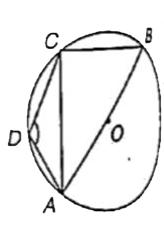 A45∘B40∘C50∘Dnone of the above
A45∘B40∘C50∘Dnone of the above - Question 3 - Select One
ABCD is a cyclic quadrilateral and AB is the diameter of the circle. If ∠CAB=48∘, then what is the value (in degrees) of ∠ADC?
A52B77C138D142
In the adjoining figure, ABCD is a cyclic quadrilateral whose side AB is the diameter of the circle . If ∠ADC=140∘ , then find the value of ∠BAC.
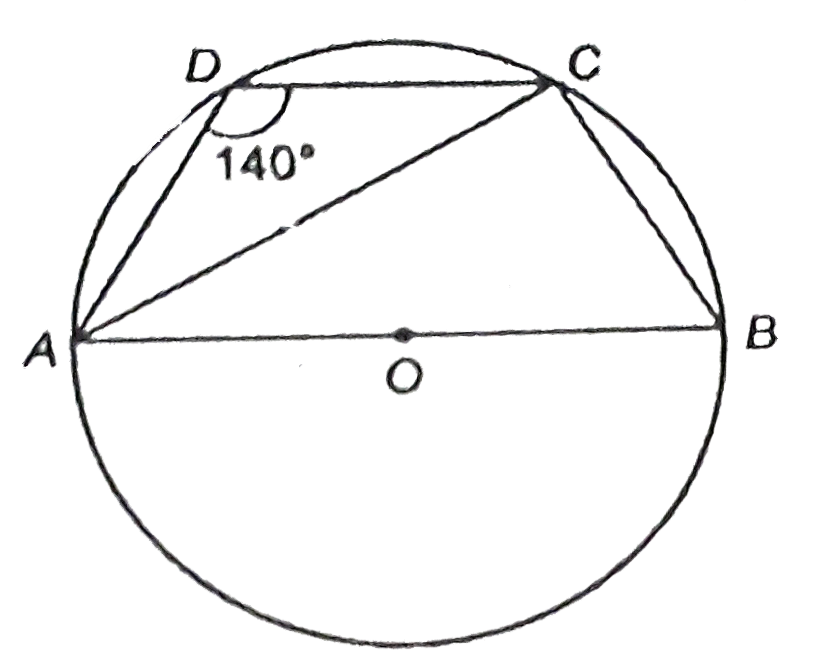 View Solution
View SolutionIn the adjoining figure, ABCD is a cyclic quadrilateral and AB is the diameter of the circle. If ∠APC=120∘, then find the value of ∠CAB.
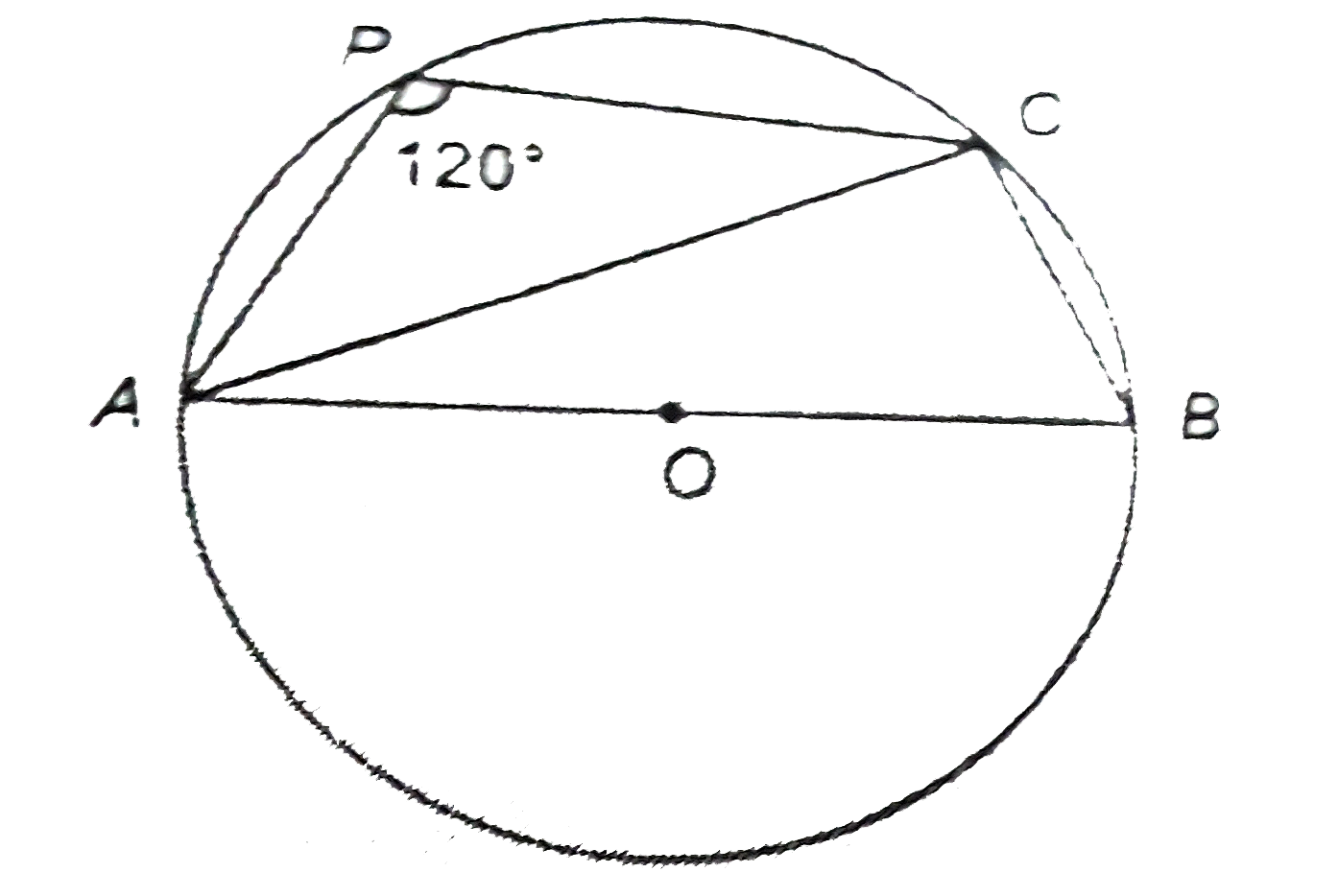 View Solution
View SolutionIn Fig , ABCD is a cyclic quadrilateral . If ∠BAC=50∘and∠DBC=60∘ then find ∠BCD.
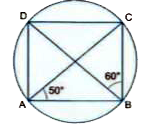 View Solution
View SolutionThe figure ABCD is a quadrilateral in which AB = CD and BC = AD. Its area is
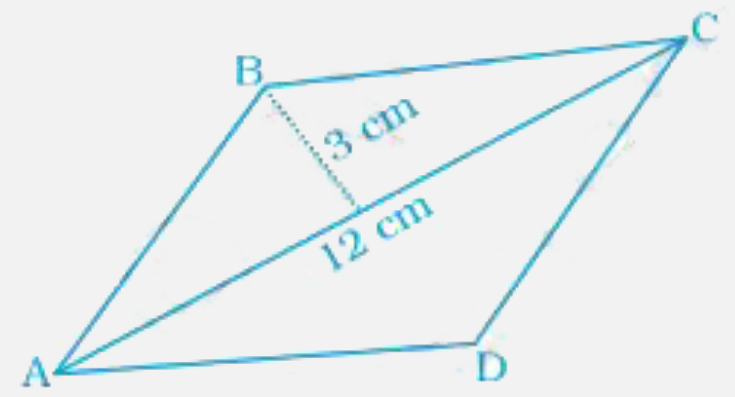 View Solution
View SolutionABCD is a cyclic quadrilateral and AD is a diameter. If ∠DAC=55∘ then value of ∠ABC is
View Solution


